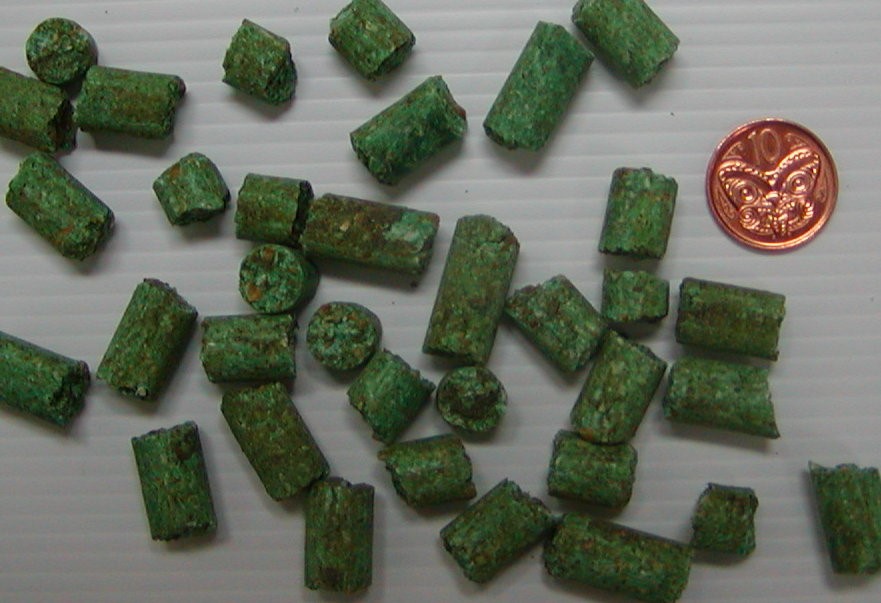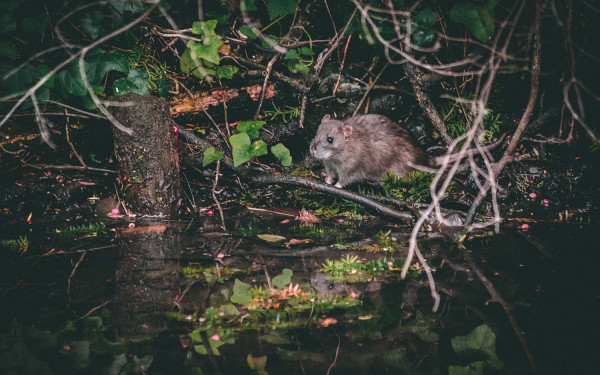Pindone is used to control rabbits. It has been used in New Zealand since the 1940s, and is sold in a number of different forms.
Pindone is a slow acting anticoagulant poison, developed as a pesticide in the early 1940s. It is particularly effective for rabbit control in New Zealand. It is also used to control rodents, possums and wallabies, however we use a different concentration to control these species.
Pindone for rabbits
Pindone is very effective on rabbits. Rabbits will damage gardens, pasture, crops, trees - even a few rabbits can have a substantial impact.
Pindone rabbit bait is dyed green or blue and comes in two forms:
- Diced carrot coated with Pindone solution
- Cereal-based pellets
Diced carrot bait could be applied on your property by Greater Wellington (certified staff must apply it for you) if it is a suitable site - there is a charge for this service. Cereal-based pellets are available at farm supply stores and must be used in bait stations if you do not have approved user certification.
Effectiveness of Pindone on your property
After using Pindone, you can expect a reinvasion of rabbits over time. The number of rabbits surrounding your property will affect how quickly this happens.
Pindone carrot will kill any rabbits that eat a fatal dose. On smaller blocks, rabbits from surrounding areas will reinvade after some time. Regular shooting or burrow fumigation can keep rabbit numbers low and extend the time between baiting.
It is advisable to talk to your neighbours when you are having bait laid. Often, they will also have a rabbit problem and if they treat their property at the same time this will extend the control area. This makes the treatment more effective.
Safe usage
Pindone bait, which is dyed green, can be used in different ways. Landowners can apply Pindone cereal pellets in a bait station, as per the product label.
To apply the pellets outside of a bait station, you must have an Approved Use for Pindone Certificate, issued by the Ministry of Primary Industries.
It is important to follow these steps:

- Before you start, read the label. It’s good practise to advise neighbours of the control programme and you must post warning signs. Leave signs in place until you have reached the legal timeframes and all poison bait is removed or has deteriorated. Allow at least three consecutive nights of fine weather for poisoning.
- Remove all livestock and domestic animals from the treatment areas before baiting is carried out.
- Locate areas where rabbit damage, fresh scratching and faecal pellet heaps are evident. Areas rabbits graze include lawns, gardens, shelter belts, newly planted pine plantations and nurseries.
- Apply bait (in bait stations) in all areas where rabbit signs are found. This is vital for the poison operation to be effective. If you are certified to apply bait outside of bait stations, spread a good handful of bait around each heap of droppings, scratching, and on patches of closely grazed pasture. Avoid long grass and scrub. Apply sufficient bait to allow rabbits to feed over two or three nights.
- If all the bait is gone after the first night, you have not put down enough. In this instance, a second application of bait will be required four days after initial baiting to ensure all rabbits receive a lethal dose.
Don’t be alarmed if there are still rabbits after the first night of application. It can take two weeks for rabbits to consume a fatal dose. Rabbits may take up to seven days to die. In most cases, you will not find rabbit carcasses. They will usually hide once the poison starts to take effect.
Pindone can be purchased from most farm supply stores, or can be ordered from us.
Tips and tricks for bait stations
Warning signs
Leave warning signs in place for eight months. This period allows for Pindone carrot to break down and any carcasses to decompose.
Birds and Pindone
The carrot bait is dyed green or blue to discourage birds from eating it. Pindone is a mammalian toxin and birds have far greater resistance to the toxin than rabbits. The bait should not be laid where poultry or garden birds are fed. If birds are used to feeding in these areas, this could cause secondary poisoning if they eat bait.
Toxicity to humans and other animals
|
|
Pindone LD 50* (mg/kg) |
Animal weight (kg) |
No. of Pindone baits to kill (based on 7-day daily dose) |
|
Rabbit |
0.52 |
1.5 |
0.9 |
|
Dog |
2.5 |
9 |
26.5 |
|
Sheep |
12 |
40 |
564 |
|
Cattle |
12 |
400 |
5,647 |
|
Human - child |
50 |
12 |
706 |
|
Human - adult |
50 |
75 |
4,412 |
*LD50: amount of toxic bait required to kill 50% of a population.
How we conduct rabbit baiting
Greater Wellington Regional Council:
- Receives an enquiry from an occupier or is notified of a problem area.
- Inspects the area to determine best control method and recommends control to landowner.
- Obtains agreement from landowners to lay Pindone bait and to cover the cost of application and provides an information sheet.
- Posts warning signs where appropriate around the property.
- Lays the Pindone carrot bait or pellets by hand in the areas most frequented by rabbits. Sufficient bait will be applied for rabbits to feed on it over at least three nights and thereby consume a lethal dose.
Baiting in areas of high public use
When baiting is to occur in areas of high public use, Greater Wellington Regional Council will:
- Consult with Public Health and Local Authority Health
- Place warning advertisements to the public in local
- Notify all neighbours and provide an information
- Post signs and information boards at entry points into affected areas.
Environmental effects
Pindone is unlikely to be found in water. This is because pellets are contained in bait stations and hand-laid bait is kept clear of streams and waterways. Do not apply where bait could get into water.
Resources
Get in touch
- Phone:
- 0800496734
- Email:
- info@gw.govt.nz

